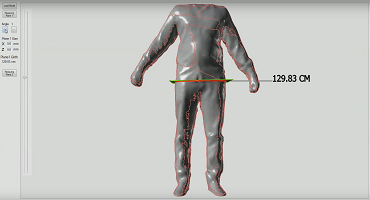Capture Your Moments in 3D
This beautiful world and the entities that we see in it are perceived in the form of dimensions. The three main dimensions in space being length, width, and depth. These three parameters make up an object that we see. Though many scientists argue that there’s more than meets the eyes, and suggest up to 10 dimensions to be in existence. But for time being, let us understand the dimensions that we humans can perceive i.e. the three spatial dimensions.
Whatever the human eyes see, the mind makes an impression of it called the memory and to pass it to others, we rely on images drawn based on those memories. The images on a paper or other such medium are a great way to represent the actual entities, but still a bit far from real. So artists would use shading or adding thickness to lines and block letters as a technique to represent the depth and called it 3D drawing. As technology advanced and we moved to mediums like photographs and movies, the desire to create truly 3D images or models also advanced.
Creating truly 3D Models
The first step towards it was stereoscopy which was used to produce an illusion of depth by presenting a 2D image to the two eyes with slight differences. The two images, viewed together, combined to give an illusion of depth and thus a stereoscopic image. However, this was the closest to 3D imaging we got.
Today, with time and technology by our side, it is possible to create 3D images and models using hardware and software. Utilizing 3D scanning, it is possible to scan or analyze and collect data of any object in the real-world and then construct its 3D model. This 3D model comprises a point cloud of geometric samples on the surface of the subject. These points can then be used to extrapolate the shape of the subject and rendered or reconstructed into a 3D model which is then used for various purposes.
Working Mechanism of a 3D Scanner
A 3D scanner, like most cameras, has a cone-like field of view. It collects distance and colour information about surfaces within this field and the resulting “picture” it produces, describes the distance to a surface at each point in the picture. While reconstruction, this allows the three-dimensional position of each point in the picture to be identified. To produce the complete model of an object, generally, multiple scans, from many different directions are required so that enough information is gathered about all its sides. These scans are then brought into a common reference system and then merged to create a complete 3D model.
3D scanning, done for the human body, or simply put 3D body scanning, utilizes these 3D scanners to scan and create 3D models of the human body measurements or specific parts as per requirement. These 3D models are then utilized in various industries ranging from fashion and fitness to medical. Imagine walking into your favourite fashion outlet and taking just 2-3 minutes for a 3D body scan. Within minutes, your measurements are done and the representatives come up with the dresses that are going to be a perfect fit like made for you. No more umpteen trials! For medical professionals, the 3D scanners serve many purposes like helping design the perfect prosthetics. A 3D scanner, along with measurement software, can give the exact measurement of the body stump and help design the custom prosthetics that fit with ease.
What’s Stopping the Wide Use?
While 3D scanners might sound like the perfect solution to many problems, it isn’t easy to manoeuvre. A single 3D scanner doesn’t suffice, so we need multiple scanners that are difficult to carry around and take a lot of time to set up. The complete setup can be costly, requires proper lighting and space, and also a lot of training on the operator’s part to capture the perfect scan. The scanners then need to be integrated with CAD/CAM software to reconstruct and make use of the scans. It is imperative that a reliable, precise, and accurate measurement platform is required to make the most of the 3D body scan generated by different scanners.
While that may seem discouraging for some to utilize the technology, it presents an opportunity for enthusiasts to further simplify and make 3D scanning efficient and accurate. Won’t it be fascinating if the 3D scanners were less bulky or simpler to operate or could take a lesser number of scans to generate a 3D image? And what would be even great is if they don’t need our physical presence to measure us up! Is that even a possibility?
Stay tuned! Stay tuned!! We will come on these more.
If you think integrating such a technology could be a game-changer for you, feel free drop in mail
Author: Pankaj C.
Contact us:
3dmeasureup@prototechsolutions.com
3D Measure Up




